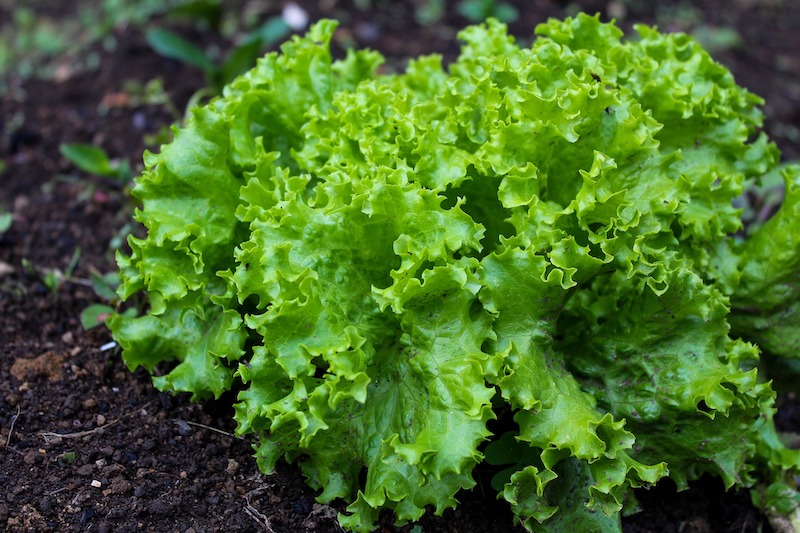One of the easiest plants to tend to in the garden, lettuce is also a great crop to both start and end the growing season. It is a cool-season vegetable and reaches maturity quickly, so it can be grown before and after other garden crops like tomatoes and peppers take the spotlight. Lettuce, known scientifically as Lactuca sativa, is available in numerous selections. Whether looseleaf, head forming, the loose upright Romaine types, or Bibb form, all lettuces have similar site preferences and care requirements.

Caring For Lettuce
Lettuce cultivation is a great place for beginner gardeners to start. The time from planting to harvest is relatively short and multiple crops can occur annually. One important consideration when growing lettuce is timing the planting. As a cool-season vegetable, lettuce grows best in spring and fall. Lettuce growing in the summer tends to languish, is quick to bolt (send up flower stalks instead of producing tasty leaves), and develops a bitter taste. Lettuce care involves site selection and preparation, proper planting, weed control, irrigation, and occasional fertilization.
Planting Lettuce
Plant lettuce where it will receive at least 6 hours of sunlight daily and be situated in well-drained soil. In heavy clay soils, work ample organic matter into the top foot of soil. Lettuce can withstand light frost and performs best during the cool season.
Put seeds or acclimated transplants in the ground about two weeks before the last frost or 80 days before the projected hard freeze. Thin plants so they are about 9 to 12 inches apart. Planting successive crops of lettuce will allow a continuous planting.
To extend the growing season for spring-planted lettuce, position them so they will be in the shade of tall garden crops like corn or tomatoes. A layer of mulch around the lettuce will limit weeds, regulate temperature, and conserve moisture. Take care when weeding around lettuce plants, as lettuce is shallow rooted and disturbance can damage the plants.

Watering Lettuce
Keep the area around lettuce seed or transplants moist but not completely saturated for the first two weeks following planting. If no rainfall occurs, this could mean daily irrigation. Once established and growing well, lettuce typically requires 1 to 2 inches of water per week through rainfall and supplemental irrigation.
Irregular moisture can cause bitterness, tough leaves, delayed development of heads, and brown leaf tips. Because lettuce plants are shallow rooted, watering should be lighter than with other, more deeply-rooted plants. Water early in the day and avoid splashing leaves to minimize the opportunity for fungal diseases.
Fertilizing Lettuce
A soil test prior to planting is the best way to determine if any soil amendments are warranted and if there are any particular fertilizer recommendations for the lettuce or other garden crops planned for a site. The ideal soil for lettuce is slightly acidic. Prior to planting, work a balanced fertilizer like a 10-10-10 formula into the soil surface at a rate of 2 pounds per 100 square feet. Following thinning, a second application can be made. Sidedress the plants at a rate of 3 ounces per 10 feet of row.
Growing Lettuce In Pots
Lettuce is an excellent candidate for container growing. In fact, containers may extend the growing season for lettuce, as a grower can have more control over the temperature for container plants than their in-ground counterparts. The best container in which to grow lettuce will be wide and shallow, or no more than about 6 to 8 inches deep. Make sure any container has plenty of drain holes and use a well-draining potting soil.
To grow young leaf lettuce, space plants 4 to 6 inches apart. Leave more space between other forms of lettuce. Take care to check on container lettuce frequently, as it may dry out faster than plants in the ground.

Harvesting Lettuce
The exact time from planting to harvest will vary depending on the type and cultivar of lettuce. Leaves on leaf lettuce can be harvested at any time; head-forming lettuce is harvested when heads form. For leaf lettuce, cut or gently break off the leaves or simply tug up the entire plant to harvest all of the leaves at once. Lettuce stores well in the refrigerator without any excess humidity for a week or two. Stop harvesting lettuce when the leaves start to taste bitter or the seed stalks form.
 |
Author Angela Ryczkowski - Published 3-14-2023 |
